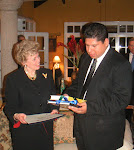---By Jim Pettit
As the Obama Administration completes its victory lap on behalf of the American people on the “Cash for Clunkers” program, automotive dealers will be navigating through a bureaucratic maze indefinitely. And U.S. taxpayers will pay the bill, having subsidized new cars for a tiny percentage of the population who happened to meet the government’s strict requirements, and who very well may have been in the market for a new car anyway. Cash for Clunkers is not working for the businesses it was intended to help or for the vast majority of consumers. The White House has moved on, leaving the messy details to the Transportation Department. This is government out of control.
To help the President finish this victory lap, the phrase “wildly successful” has been used consistently in Administration talking points, speeches and press releases. There is nothing successful, wildly or otherwise, about giving away free money. What’s more, the money isn’t free. There is interest to pay due to a chronic budget deficit and national debt. There are costs associated with what the Department of Transportation calls “private sector” contractors – a thousand or so part-time workers, probably temps, to process the paperwork. The Government had to create a new IT system so dealers can get paid. And while it doesn’t work well, it certainly was not free. Then, of course, there is the cost of the program itself.
This widely-reported $3 billion scheme, borrowed from Germany, involves consumers trading in relatively poor gas mileage vehicles and receiving up to $4500 to purchase a new, fuel efficient one. Cash for Clunkers, or C4C in industry short-hand, generated nearly 700,000 new car sales according to government data released August 25. To put this number in context, there are 136 million registered automobiles in the U.S. Most people did not qualify, unless they had a worn out SUV and desired a new small car and could afford to forego the trade- in value of the used vehicle. For everyone else - too bad.
Dealers, who live or die on a basic financial concept known as the time value of money, are left in the aftermath, with untold millions waiting to be processed in some Transportation Department office in Washington. The website that dealers were required to use to get paid crashed so many times that government-imposed deadlines had to be pushed back.
According to a survey published in Automotive News August 24, 61% of dealer respondents were not confident they will get paid for all their C4C transactions. Yet, the U.S. Department of Transportation’s web site has a prominent link to a statement that is remarkable in both simplicity and arrogance. This statement is now front and center on CARS.gov under bold type saying “CARS closed, ”the aforementioned required website for reimbursement submission. The statement says,
”The CARS program has been a wild success. It … has provided an economic boost to the car dealers, the auto manufacturers, the people who provide consumer loans and scrap yards.” A disclaimer at the bottom, in true bureaucratic fashion, reads: “Please note the submission deadline has no effect on continued processing of invoices that have been or will be rejected for errors.”
According to the U.S. DOT, Maryland dealers submitted $75 million for reimbursement as the program ended. DOT has not disclosed how much dealers in Maryland, or elsewhere, have received to date.
Darcars Automotive Group Vice President Tammy Darvish, who oversees multiple dealerships across Maryland, said 1651 vehicle sales are attributable to C4C. The work that remains is another matter – the dealership has been paid on just 16 of those deals. Stated another way, Darcars has $6.5 million outstanding, and they’ve only been paid 1%. This is what Darvish told me:
“I can tell you that we have hundreds of hours of overtime, over 25,000 pages of photo copies that had to be made to scan the deals for CARS.gov requirements, and we had to purchase computer equipment for each of our dealerships.”
No wonder. The rule, not the law, but the final rule to implement the law, is 136 pages that goes into mind-numbing detail ranging from engine disabling procedures, assessing EPA mileage, and how dealers must mark the title of the trade in vehicle for submission. Darvish goes on to say that additional costs were incurred to comply with rules for junking the vehicles - draining the oil, storage and transportation to the scrapping facility.
As of now, C4C adds expenses to an industry sector already beleaguered with credit problems, dealer closures and slow domestic sales. According to the U.S. DOT, 7% of dealer reimbursements have been “reviewed and approved” for payment as of August 19. What does that mean? Maybe it means the DOT can’t say what the status is of 93% of payments owed to dealers all across the country. And they should know real-time because electronic funds transfer is specified in the rule.
Meanwhile, don’t expect delays in the White House message machine. The Council of Economic Advisors was ready for the August 26 DOT announcement that C4C had concluded, predicting a 0.3-0.4 percentage point boost in the GDP annual rate as a result of the clunker program. It’s hard to say whether that projected economic growth assumes dealers have been paid. Equally hard to say is whether the Council will project future negative impacts with 700,000 people now out of the market.
The only good thing to say about Cash for Clunkers is that it officially ended. However, it was a bad deal for business and consumers alike, sloppy in execution and expensive to administer. This is not what the American government is supposed to be doing. Maybe in Germany, but not here.







+-+Copy.jpg)



No comments:
Post a Comment